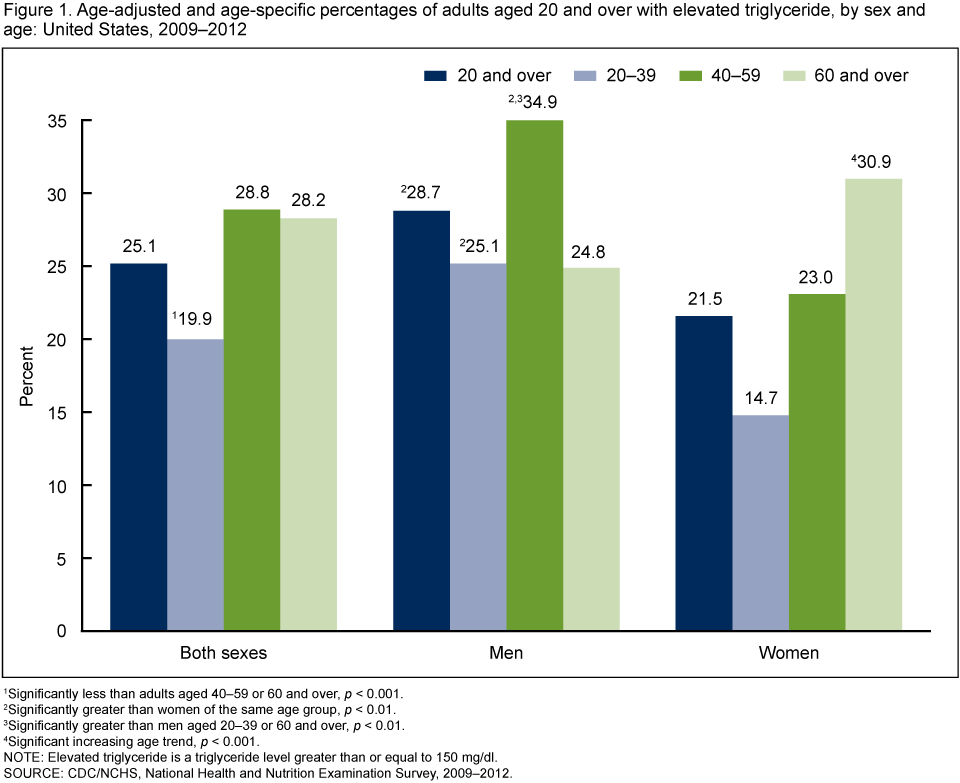Trends in Elevated Triglyceride in Adults: United States, 2001–2012
Posted on byElevated triglyceride is associated with cardiovascular disease. For adults aged 20 and over with elevated triglyceride, recommendations for therapeutic lifestyle changes include increased physical activity, weight loss, optimal nutrition-related practices, and smoking cessation.
A new NCHS report shows trends in the percentage of U.S. adults aged 20 and over with elevated triglyceride (150 mg/dL or more) are examined using data from National Health and Nutrition Examination Surveys 2001–2004, 2005–2008, and 2009–2012.
Key Findings from the Report:
- The percentage of adults aged 20 and over with elevated triglyceride (150 mg/dL or more) declined from 33.3% during 2001–2004 to 25.1% during 2009–2012.
- Percentages with elevated triglyceride decreased for both men and women—among men, from 37.3% for 2001–2004 to 28.7% for 2009–2012, and among women, from 29.3% for 2001–2004 to 21.5% for 2009–2012.
- For adults aged 60 and over, declines in elevated triglyceride levels were seen in both men (from 39.9% during 2001–2004 to 24.8% during 2009–2012) and women (from 43.5% during 2001–2004 to 30.9% during 2009–2012).
- Declines in elevated triglyceride levels were observed in overweight and obese men and women between 2001–2004 and 2009–2012.
Categories Uncategorized
Page last reviewed: May 8, 2015
Page last updated: May 8, 2015
Content source:
CDC, National Center for Health Statistics
